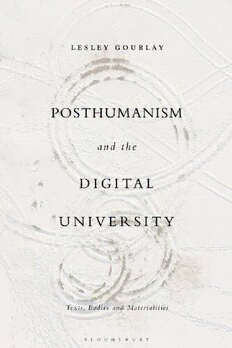
Posthumanism and the Digital University: Texts, Bodies and Materialities PDF
201 Pages·2021·1.535 MB·English
Most books are stored in the elastic cloud where traffic is expensive. For this reason, we have a limit on daily download.
Preview Posthumanism and the Digital University: Texts, Bodies and Materialities
Description:
As digital technologies become increasingly central in our day-to-day lives, there have been profound changes in how we search for information, communicate with others, and express ourselves. This book is concerned with how this communication is altering higher education, and the effects that it is having on universities. It applies a posthumanist framework to help understand how technology is affecting the primacy of the written text.Analysing data from a research project which looked in detail at how a small group of students approached their studies over a six-month period, this book uses drawings, photography and interviews to form an in-depth understanding of their day-to-day lives as students, and how they navigate the complex digital and material landscape of the contemporary university. It looks at how texts change when they move between paper-based and the digital, how students navigate the complexities of multiple devices and formats, how they make spaces for writing and knowledge while on the move, and how they form part of ‘posthuman’ networks of digital devices and material objects in order to engage in their studies.Taking a historical perspective, the book concludes that textual practices have always been central to how higher education is organised and how we understand ‘knowledge’, and considers how digital media might continue to change what we call ‘the university’.
See more
The list of books you might like
Most books are stored in the elastic cloud where traffic is expensive. For this reason, we have a limit on daily download.
